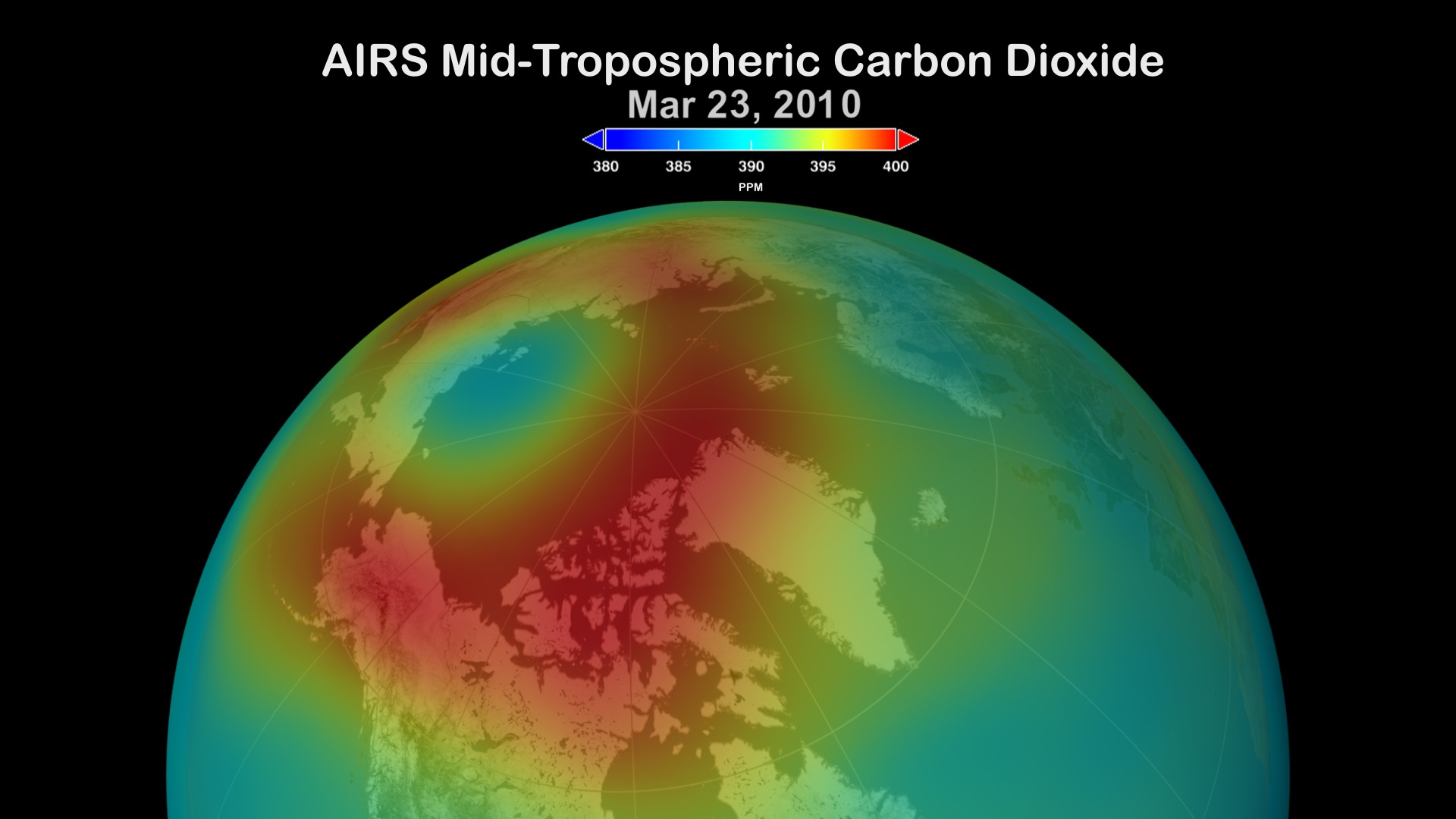Trapped In The Troposphere
The air above the icy and remote Arctic experiences larger carbon dioxide fluctuations than anywhere on the planet. Driven by the disparate forces of plants and winds, the seasonal rise and fall of this greenhouse gas cycles in tune with the vegetation scattered across the vast landmasses of the Northern Hemisphere. Levels first start to rise in winter after forests and fields go dormant and plants stop photosynthesizing carbon dioxide from the air. But then they spike in early spring as warmer weather arrives and dead vegetation decays, releasing bursts of stored carbon that's confined to the pole by the polar jet stream's fast-moving winds. The visualization uses data from the Atmospheric Infrared Sounder on NASA's Aqua satellite to show the changing carbon dioxide levels above the Arctic from February 2010 to February 2011.

Powerful winds hold carbon dioxide hostage in the Arctic.
Arctic carbon dioxide levels are measured in the mid-troposphere, about 5 to 7 miles above the surface.

Decaying vegetation and the winter build-up of carbon dioxide combine for maximum concentrations above 400 parts per million in April.

As plants photosynthesize in summer, carbon dioxide levels fall sharply from the spring peak.

By the first day of winter, a carbon dioxide concentration closer to the global average has emerged across the region.
Credits
Please give credit for this item to:
NASA's Goddard Space Flight Center
-
Animator
- Lori Perkins (NASA/GSFC)
-
Scientists
- Edward Olsen (NASA/JPL CalTech)
- Hai Nguyen (California Institute of Technology)
-
Project support
- Sharon Ray (NASA/JPL CalTech)
-
Writer
- Christina Coleman (Telophase)
Release date
This page was originally published on Tuesday, March 20, 2012.
This page was last updated on Wednesday, May 3, 2023 at 1:53 PM EDT.
